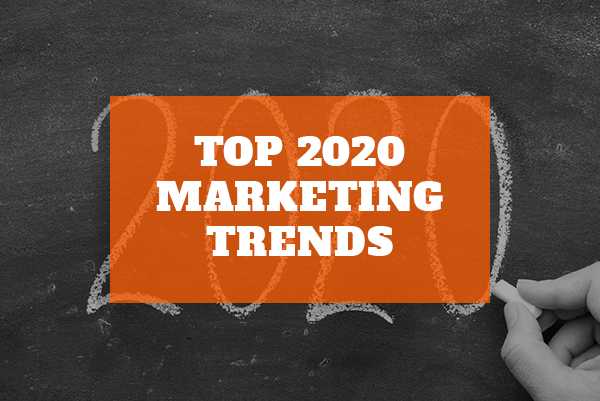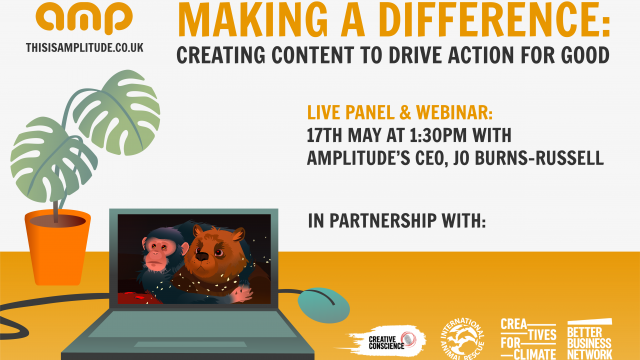Our Top Five 2020 Marketing Trends
With the majority of 2020 still ahead of us, now is a great time to look at what we can expect to see in the marketing sector over the next year. We’ve scoured the web for all the latest insights, combined them with what we observed ourselves, and put together a list of 2020 marketing trends. In no particular order, here we go…

Data Privacy
This is a biggie. The last few years gave us the Cambridge Analytica/Facebook scandal and numerous high-profile data leaks, so it’s understandable that consumers are more concerned than ever before about how their data is gathered, stored, and used. Additionally, GDPR was introduced in 2018, tightening legal requirements around how personal data is handled, again increasing the importance of having a good grasp on your data management policies (something that won’t change after Brexit, at least not in the short-medium term).
Thankfully, the solutions here are relatively simple:
- Have a data protection policy. Make sure it’s readily available to anyone who wants it.
- Don’t keep gather or keep data you don’t need. Delete anything that’s no longer required.
- Only use the information you do keep for the purposes stated when you gathered it.
- Respond promptly to any data request.
- Store information on secure servers.
- Know what to do in the event of a data breach.
Consumer trust in the organisations handling their data is at an all-time low. We can only change that by being better.

AI (Artificial Intelligence)
No surprises here. AI will continue to dominate 2020 marketing trends. When many people think of AI, they first think of incredibly sophisticated uses (or Terminator), but more and more, AI is being used on the small-scale, and this is where we’ll see it continue to grow in 2020.
We’ll see AI used to…
- Monitor and report on consumer behaviour and trends
- Talk directly to consumers (e.g. chat bots)
- Personalise content
- Recommend products to consumers
- Automate other simple tasks
AI will take away some of the tedious busy work that many marketers hate, giving us more time to strategise and create.


Conversational Marketing
Expect to be seeing a lot more of this phrase in future. Social strategies are shifting away from blanket advertising towards more targeted, conversational marketing. What this means is exactly what it sounds like: having conversations with consumers. This predominantly comes in two forms:
- Generating conversation through comment-worthy content (public interaction).
- Talking directly to consumers through messaging apps (private interaction).
You might think this sounds like a big ask. After all, if we have a lot of potential consumers, that’s a LOT of potential conversations to be having at once, but this is where AI can help. AI can report on what’s generating the best conversations publicly, and chatbots can be used to assist in private conversations.

Personalisation
Consumers are constantly bombarded with advertising these days. Pretty much every flat surface has something printed, projected, painted, or rendered on it that’s designed to make them think, purchase, or do something. To stand out, brands need to be able to cut through the crowd. Key to this in 2020 will be personalisation. We’re not just talking about sending marketing emails with mail-merged “To” fields, but about personalised content.
Here are a few ideas to get you started:
- Split your mailing list into multiple smaller lists and personalise the content according to recipient behaviour and preferences.
- If you’re approaching a small number of B2B clients, try personalising your direct content with their company name, logo, recipient name, and any other pertinent information. If you have history with that client, mention it.
- Tailor your services to the needs of specific customers where possible. Be flexible.

Video & Interactive Media
Last but by no means least, we’re seeing increased use of video and interactive media. Film, animation, and motion graphics are all great at capturing and keeping people’s attention. If your content is interactive (gamified, AR, VR, or via an app), that’s even better! This kind of content continues to perform extremely well. Done well, a video (interactive or passive) can convey even complex notions in a matter of seconds. With user attention spans decreasing, that’s more important than ever.

Things to bear in mind:
- Intros must be highly engaging to capture and keep attention.
- Both sound and visuals are important. Remember that people may be watching with the sound turned off, or listening without looking.
- Be succinct. Over-explaining something can be as damaging as under-explaining.
- Make sure you know why you’re creating video content and how it fits into your marketing strategy.
- Interactive elements don’t have to be complex to be effective.
Obviously, we have a horse in this race. We’re a video agency that would love to work with you, but it’s worth bearing in mind that not every video you produce needs full production behind it. We find that a mix of highly polished headline content (product/service explainer videos, lifestyle videos etc) mixed with more ad-hoc video (behind the scenes video) works well at generating not just engagement, but a community feel that’ll help keep people interested in your brand.
So there you have it, the five things we regard as the top 2020 marketing trends. If you want to know more about any of these, or would like to look into creating video for your brand, you know where we are. Get in touch.





